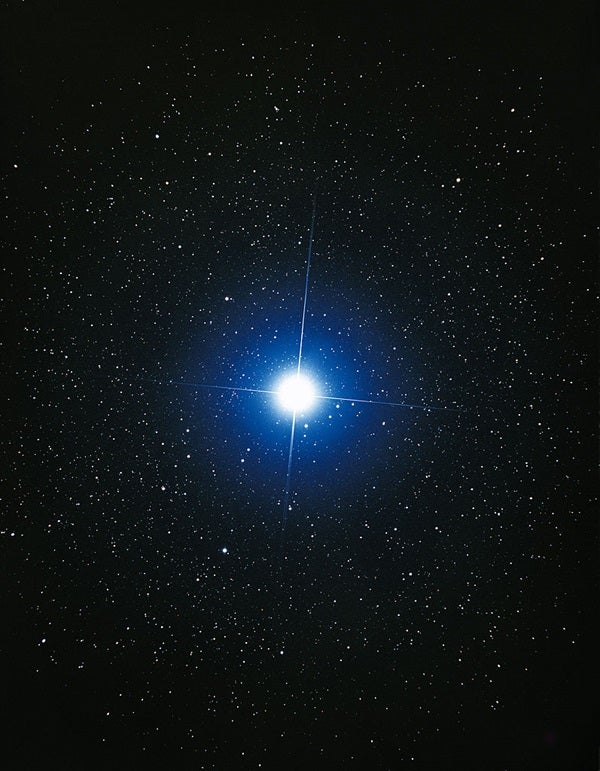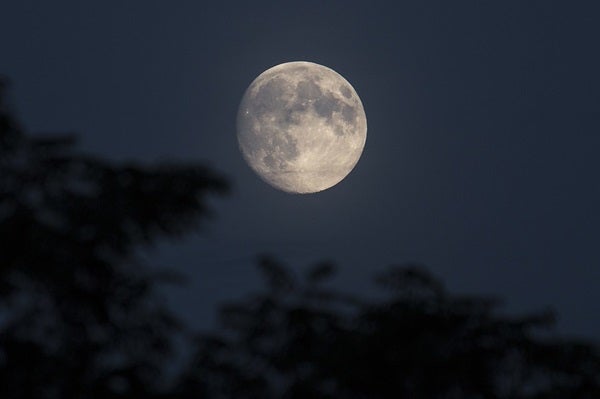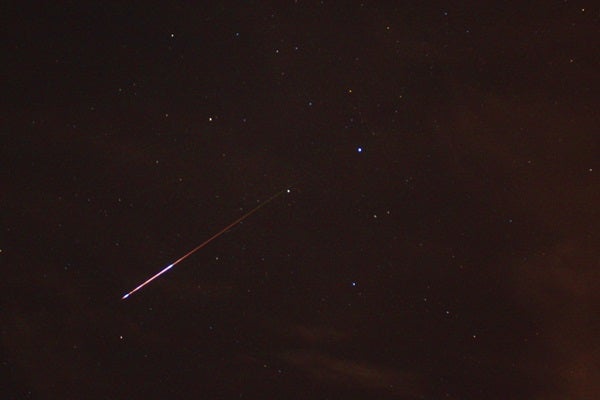Friday, April 7
Brilliant Jupiter reaches opposition and peak visibility tonight. It rises in the eastern sky at sunset and climbs highest in the south around 1 a.m. local daylight time. Shining at magnitude –2.5, the giant planet is the night’s brightest celestial object with the exception of the waxing gibbous Moon and Venus, which doesn’t rise until morning twilight begins. Jupiter resides among the background stars of Virgo, some 7° northwest of that constellation’s brightest star, 1st-magnitude Spica, and a mere 0.3° west of 4th-magnitude Theta (q) Virginis. When viewed through a telescope, the gas giant’s disk spans 44″ and shows incredible detail in its cloud tops, while its four bright moons appear arrayed east and west of the planet.
Saturday, April 8
Although Mercury reached greatest eastern elongation a week ago, in remains conspicuous in evening twilight. Look for it about 9° above the western horizon 30 minutes after sunset. It shines at magnitude 1.6, so you may need binoculars to pull it out of the twilight glow. A view of the inner world through a telescope reveals an 9″-diameter disk that appears just 16 percent illuminated.
Sunday, April 9
This is a good week to look for Sirius in the evening sky. Blazing at magnitude –1.5, it is the night sky’s brightest star; only the Moon and Jupiter outshine it on April evenings. From mid-northern latitudes, you can find the beacon about 25° high in the southwest at 9 p.m. local daylight time. (The farther south you live, the higher it appears.) If you point binoculars at Sirius, look for the pretty star cluster M41 in the same field of view, just 4° south of the star.
Monday, April 10
Full Moon arrives at 2:08 a.m. EDT tomorrow morning (11:08 p.m. PDT this evening), but our satellite looks completely illuminated all night. It rises in the east shortly before the Sun sets and reaches its peak in the south around 1 a.m. local daylight time. The Full Moon lies in central Virgo, some 3° from brilliant Jupiter and 7° from that constellation’s brightest star, 1st-magnitude Spica.
Tuesday, April 11
After passing between the Sun and Earth only two weeks ago, Venus already appears conspicuous in the predawn sky. It rises more than an hour before the Sun and climbs nearly 10° above the eastern horizon some 30 minutes before sunrise. The planet shines so brightly, at magnitude –4.6, that it shows up easily in the brightening twilight. A telescope will deliver spectacular views of the inner world’s 52″-diameter disk, which appears just 10 percent lit.
Wednesday, April 12
Mars continues to put on a nice show these April evenings. It appears nearly 20° high in the west an hour after sunset and doesn’t dip below the horizon until after 10 p.m. local daylight time. The magnitude 1.5 Red Planet crosses from Aries the Ram into Taurus the Bull today. Unfortunately, Mars’ 4″-diameter disk shows no detail when viewed through a telescope.
Thursday, April 13
For those who like to observe during the quiet predawn hours, Saturn offers a visual treat. The ringed planet rises shortly before 1 a.m. local daylight time and climbs about 30° high in the south by the time morning twilight begins. It shines at magnitude 0.3 against the backdrop of northwestern Sagittarius, where it appears nearly stationary relative to the background stars. Take a look at Saturn through binoculars and you’ll also see the open star clusters M21 and M23 as well as the spectacular Lagoon (M8) and Trifid (M20 ) nebulae less than 4° to its east. When viewed through a telescope, the planet shows a 17″-diameter disk surrounded by a stunning ring system that spans 39″ and tilts 26° to our line of sight.
Friday, April 14
Orion the Hunter stands out in the western sky as darkness falls this week. The conspicuous constellation appears slightly askew compared with its appearance in winter’s evening sky. Now, the three-star belt is aligned parallel to the horizon while blue-white Rigel hangs directly below the belt and ruddy Betelgeuse stands directly above.
Uranus is in conjunction with the Sun at 2 a.m. EDT. From our earthly perspective, this means the distant planet lies behind the Sun and so is out of sight. Uranus will return to view in the morning sky in late May.
Saturday, April 15
The Moon reaches apogee, the farthest point in its orbit around Earth, at 6:05 a.m. EDT. It then lies 251,950 miles (405,475 kilometers) from Earth’s center.
Sunday, April 16
The annual Lyrid meteor shower begins today. Although the shower won’t peak until the morning of April 22, you may see a few meteors in the predawn hours before then. To tell a Lyrid from a sporadic meteor, trace the streak of light back to its origin. Lyrids appear to come from the constellation Lyra the Harp, while sporadics appear at random and can come from any direction.
The waning gibbous Moon appears just above Saturn before dawn. The two approach each other as the morning progresses, and the Moon will pass 3° north of the planet at 2 p.m. EDT.












